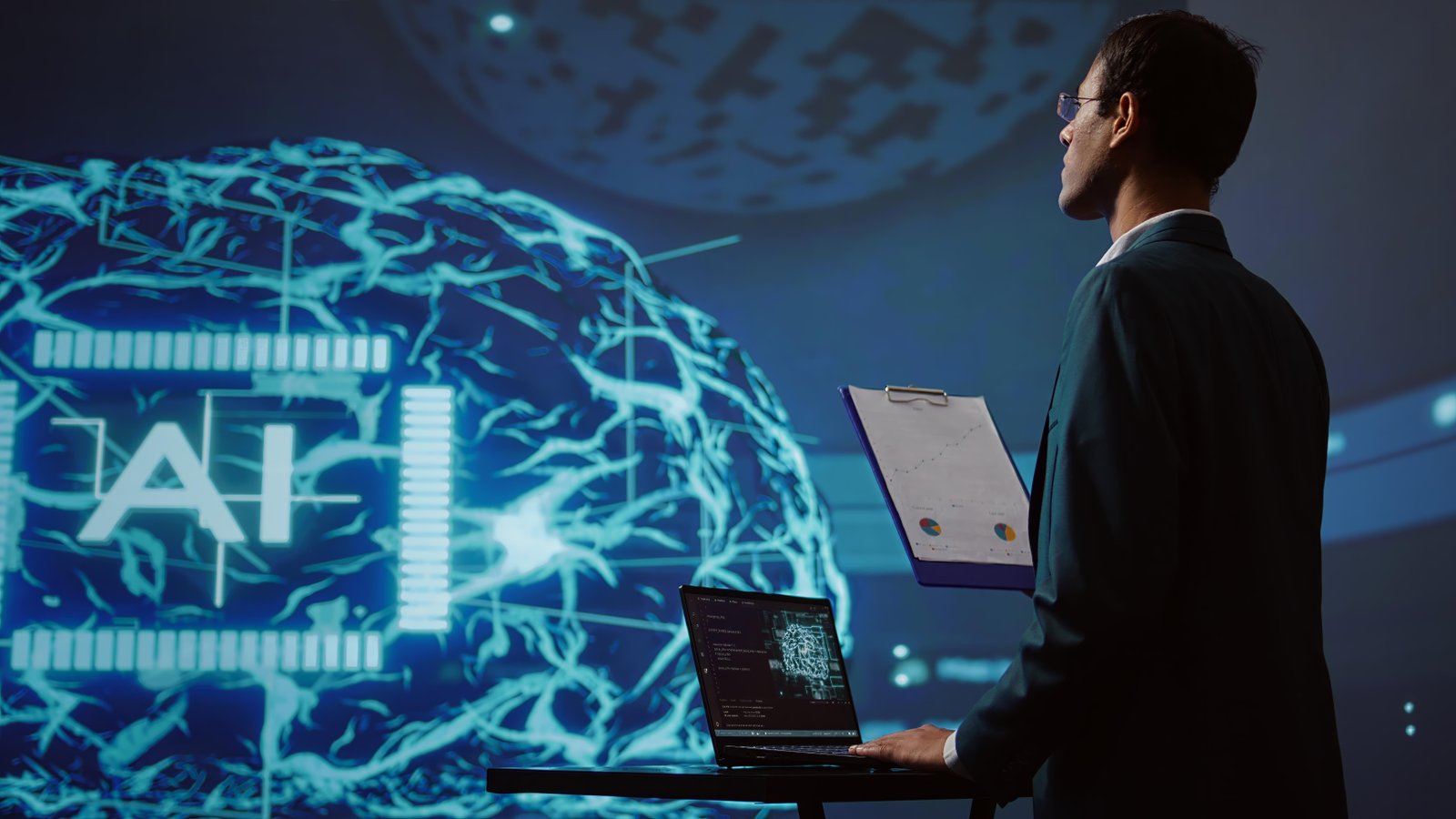No products in the cart.
Learn how artificial intelligence works and how it is transforming industries.

Artificial Intelligence (AI) is transforming the way we live and work, influencing industries worldwide, including in Laos. As businesses and governments increasingly adopt AI technologies, understanding its basics and functionality is essential for professionals, entrepreneurs, and students preparing for the future.
This article explains the fundamental concepts of AI, its main branches, and how it is applied across sectors.
What is Artificial Intelligence?
Artificial Intelligence refers to machines or computer systems capable of performing tasks that normally require human intelligence. These tasks include recognizing speech, interpreting images, making decisions, understanding natural language, and learning from experience.
AI systems use data, algorithms, and computing power to simulate human cognitive functions.
Main Branches of AI
1. Machine Learning (ML)
Machine Learning is a subset of AI that enables systems to learn from data without explicit programming. Algorithms find patterns and insights from large datasets, allowing applications such as recommendation systems, fraud detection, and predictive maintenance.
2. Deep Learning
A further advancement of ML, deep learning uses artificial neural networks with multiple layers (hence "deep") to process complex data like images, audio, and text. This technology powers innovations such as voice assistants and image recognition.
3. Natural Language Processing (NLP)
NLP enables machines to understand and respond to human language. It’s used in chatbots, translation tools, and virtual assistants, making interactions with technology more intuitive.
4. Computer Vision
Computer vision allows AI to ‘see’ and interpret visual information from the world — analyzing images and videos for tasks like facial recognition, object detection, and autonomous driving.
How AI Works in Practice
AI systems typically follow these steps:
Data Collection: Gathering relevant data from sensors, databases, or online sources.
Data Processing: Cleaning and organizing data to prepare for analysis.
Algorithm Training: Teaching the AI to recognize patterns using machine learning models.
Inference: Applying learned models to new data to make predictions or take actions.
Feedback: Improving AI accuracy through ongoing evaluation and adjustment.
Applications of AI in Laos and Beyond
Business and Industry
AI helps companies analyze market trends, optimize supply chains, and improve customer service with chatbots.
Automated tools reduce mundane tasks, freeing up human resources for strategic work.
Healthcare
AI assists with diagnosing diseases, personalizing treatments, and managing patient records.
In Laos, telemedicine and AI decision-support systems are growing to enhance rural healthcare.
Agriculture
AI-powered drones and sensors monitor crop health and predict yield, enabling smarter farming decisions.
Government and Public Services
AI supports traffic management, public safety forecasting, and e-government digital services.
Challenges and Ethical Considerations
Despite AI’s benefits, challenges include data privacy, algorithm bias, and the need for regulatory frameworks. Ensuring responsible AI development and use is a priority for governments and organizations worldwide, including Laos.
Conclusion
AI is a powerful technology shaping the future across many fields. Understanding its basics and how it functions prepares individuals and businesses in Laos to leverage AI for innovation and growth in 2025 and beyond.
About CITS Laos
Stay informed about AI and emerging technologies with CITS Laos. We provide expert insights, digital tools, and resources to help Lao professionals and businesses thrive in the digital age. Visit cits.la for the latest updates and support.